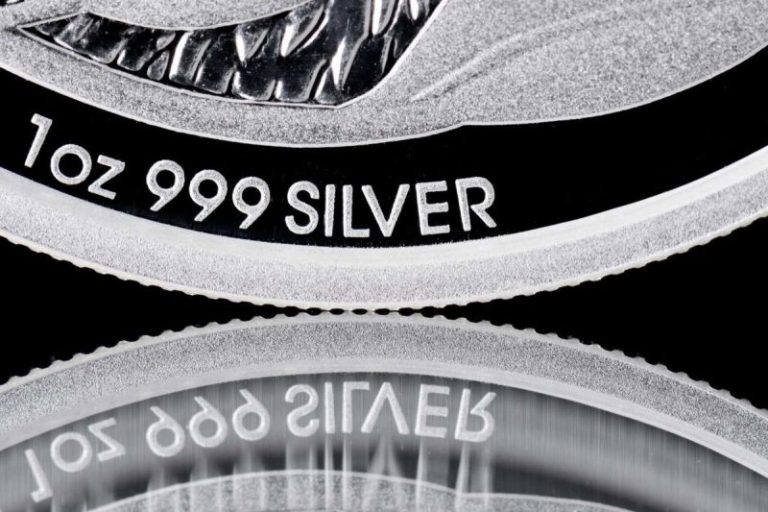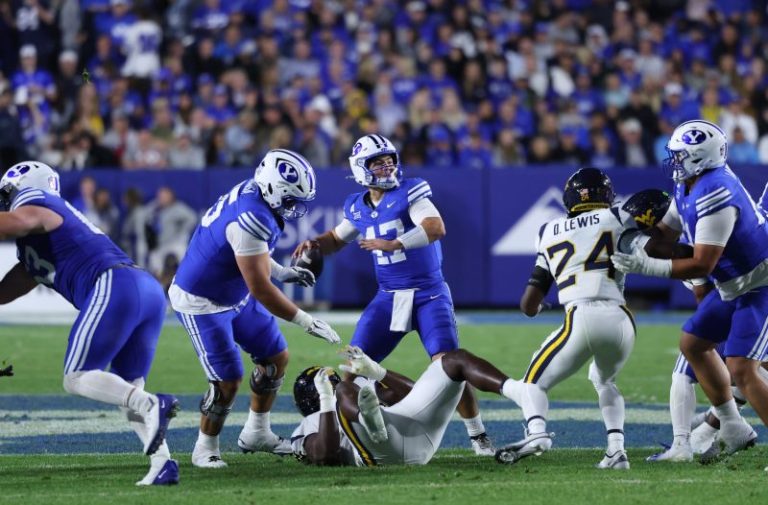- Teoscar Hernández’s three-run home run helped the Dodgers win Game 1 over the Phillies.
- Vladimir Guerrero Jr. helped the Blue Jays batter the Yankees in Game 1.
- The Brewers scored six runs in the first inning to sprint past the rival Cubs in Milwaukee.
You can’t win a best-of-five Division Series in Game 1 – but it’s possible you can lose it.
All four NL and AL division series jumped off with a bang Oct. 4 and while momentum may or may not be a real thing, the joy of getting 33% of the way to moving on cannot be underestimated.
And though there’s time for redemption and also an untimely downfall, going 1-0 on this day can be so important.
With that, USA TODAY Sports breaks down the winners and losers from all the Game 1s of the division series:
WINNERS
Teoscar Hernández
The Life of Teo is simply a never-ending roller-coaster ride – and thankfully for the Los Angeles Dodgers, it crested at just the right time to steal Game 1 of their NL Division Series at Philadelphia.
Hernández’s three-run, go-ahead home run in the seventh inning flipped the game in L.A.’s favor, turning a one-run deficit into a 5-3 lead and eventual winning margin.
And it continued a season in which the beloved Hernández has been far more an enigma than the Dodgers preferred.
Consider the last week:
➤ Game 1, NL wild-card series: A two-homer game to knock the Reds to the canvas before they could get in the fight.
➤ Game 2, NL wild-card series: A dropped fly ball that led to two runs scoring, making their elimination of Cincinnati far more difficult.
➤ Third inning, NLDS Game 1: Hernández simply stopped running his hardest when J.T. Realmuto’s liner rolled up the gap in right center.
Oh, two runs probably would’ve scored eventually anyway, but Hernández’s reticence in cutting the ball off almost certainly resulted in Realmuto reaching third and eventually scoring. And suddenly the Phillies had a 3-0 lead, one that looked insurmountable until … Hernández homered yet again.
And then, an opposite-field blast off Matt Strahm to bring the Dodgers all the way back. Unbelievable.
All this came after a regular season in which Hernández fell into an 81-game funk from late May to early September in which he posted a .207/.250/.361 line and struck out nearly 30% of the time. A .916 OPS over his final 16 games and four hits in 10 at-bats – including two homers – in the wild-card series had the sunflower seeds flying again.
What’s next? Hold on tight.
Vladimir Guerrero Jr.
You’re forgiven if you can’t recall seeing Guerrero play in the postseason – because he and the Toronto Blue Jays were virtually invisible.
They went 0-6 in wild-card series in 2020, 2022 and ’23, all as Vladdy went 3 for 22 with no home runs. So it was no small thing when Guerrero’s first at-bat of the AL Division Series against the Yankees ended with his moonshot framed against the gorgeous, open-roof sky at Rogers Centre before landing in the left field seats.
The Blue Jays led 1-0 and won 10-1, a game that was still 2-1 in the seventh. Guerrero had three hits and a sac fly – far from invisible, and just getting started.
John Schneider
He was the skipper for the latter two Blue Jays playoff pratfalls and endured both types of managerial nightmares: Leaving a starting pitcher in too long and then yanking another one too early.
Toronto held an 8-1 lead over Seattle in the sixth inning in 2022 Game 2, yet starter Kevin Gausman was allowed to wobble and give up three runs in the inning to get the Mariners back in it. The momentum never left – and Seattle eliminated Toronto in a 10-9 triumph.
A year later, in another Game 2 elimination battle, José Berríos had given up just three hits in three innings and just struck out the side against Minnesota. Yet after a leadoff walk in the fourth, he was yanked after just 32 pitches.
Yusei Kikuchi allowed his inherited runner to score, gave up another run of his own for good measure and Toronto was eliminated, 2-0.
So imagine Schneider’s emotions when Gausman nursed a 2-0 lead in the sixth and loaded the bases – with Aaron Judge coming to the plate.
Schneider stuck with his ace – and Gausman struck out Judge. Even as he walked in a run, Schneider did not waver – and Gausman got Ben Rice to pop up for the second out.
Finally, he lifted Gausman – and reliever Louis Varland struck out Giancarlo Stanton to load the bases.
Just about every button pushed was perfect. And Schneider finally got his first postseason win – and the Jays’ first since 2016.
Extra innings with no Manfred Runner
For those averting their eyes – or turning off the television or computer or radio – during the regular season when games go to the 10th inning and ersatz baseball is staged, the playoffs are a safe space.
And the Tigers and Mariners taking a 2-2 tie into extra innings of a playoff game was delicious theater.
No bogus runner placed on second. No awkwardness of a three-true-outcomes trying to get a bunt down to get the Fake Guy to third. Just a clash of wills and thrills, capped in the 11th inning when Zach McKinstry coaxed a single through the Mariners’ infield to break the tie and send the upset-minded Tigers up 1-0 – with Tarik Skubal lurking in Game 2 on Sunday, Oct. 5.
The Brewers’ viability
It can’t be easy cruising through the final few weeks of the season knowing you’ve wrapped up the division while pundits obsess over the fact you typically turn tail come playoff time.
But the Milwaukee Brewers roared out of the postseason gate as if they were fueled by the naysayers.
They won Game 1 for just the second time in their last six playoff series – which can take a lot of the sting out of hearing their home ballpark is ‘Wrigley North.’
Shohei Ohtani
It looked like the legend of Ohtani would take a hit when he yielded three second-inning runs to Philadelphia, thanks in part to suboptimal defense (see: Hernandez item). But Ohtani, in his first career postseason pitching appearance, simply kept climbing up the mound and dominating the Phillies.
He struck out nine and gave up just three hits over six innings while flashing that little bit of extra exuberance he gets when he’s on the mound (That scream and fist pump after striking out Kyle Schwarber was different, to say the least.)
Oh, he couldn’t quite pull off the dominant daily double, his hitting version getting stymied by Phillies lefties Cristopher Sanchez and Matt Strahm, who struck him out four times. But this playoff pitching thing was something new for the player who’s seemingly done it all – and Ohtani passed that test and enabled the Dodgers to snag Game 1.
Starters in relief
When you spend $72 million on Tanner Scott and pay Kirby Yates $13 million for one season and both turn out to be unviable for the playoffs, what’s a manager to do?
Simply turn two members of your nine-ish man rotation into firemen.
Sure, all bets are off in the postseason, and Boston Red Sox manager Alex Cora fully ushered in this era of starting pitchers going in relief back in 2018. Yet what Dave Roberts did in unleashing Tyler Glasnow and Rōki Sasaki for the final three innings of the Dodgers’ Game 1 stunner was on another level.
Glasnow did not pitch during the Dodgers’ World Series-winning run a year ago because he was injured, which unfortunately for Glasnow is a frequent occurrence. But he was upright for this postseason, and with Yoshinobu Yamamoto ensconced as the ace and Blake Snell healthy and Ohtani capable of going six, seven, however many innings the Dodgers need, what’s a guy to do with a 6-8 fireballer?
Throw him in the bullpen – even if he hadn’t thrown a pitch in relief since 2018 in Pittsburgh, two teams and a lifetime ago.
And Glasnow pulled it off, recording five outs to nearly bridge the gap from Ohtani to the new closer. Hey, he gave up a hit and two walks and L.A. had to close its collective eyes when the recently sketchy Alex Vesia needed – and got – one out.
But Glasnow got it done, leaving the ninth to Sasaki, who’s been a relief stalwart for, well, almost two whole weeks now.
The Dodgers barely had time to workshop Sasaki in the bullpen at the end of the year when he returned from myriad health woes, swallowed his pride and forgot that he was supposed to be the runaway Rookie of the Year – as a starting pitcher.
Instead, he went to the ‘pen and emerged onto the Citizens Bank Park mound for the ninth inning – and recorded his first career save to finish an epic postseason tilt.
That’s the third of 13 wins the Dodgers will need to defend their championship. If they do get the chance at a 13th W this year, who knows what Roberts and the brainiacs in the front office might concoct.
LOSERS
‘Rest vs. rust’
Remember when a pair of wild-card teams made nice postseason runs in the first two iterations of this modern playoff format, sparking discourse that perhaps it was preferable to play an extra round rather than enjoy a few days off?
Yeah, about that.
Teams that earned byes to the Division Series have gone 2-1 in 2025 Game 1s, puncturing the notion raised by the 2022 Phillies and 2023 Diamondbacks’ World Series appearances that it’s better to jump in the fire than chill on the couch.
Nope, it was just an extremely small sample (who could’ve imagined?) that would eventually even out over time. And the advantages of avoiding the wild card were abundant in Game 1s.
Just look at the Yankees, who saw a significant dropoff from starters Nos. 1-2-3 (Max Fried, Carlos Rodón, Cam Schlittler) to No. 4 Luis Gil, who couldn’t get out of the third inning at Toronto. Or the Cubs, whose foolhardy decision to start Matthew Boyd on three days’ rest speaks to the fact their pitching depth isn’t sufficient to cover three wild-card games and an NLDS opener.
The Phillies were poised to make it three in a row, until …
Rob Thomson
He’d been on the mildly hot seat after the Phillies’ regression from surprise World Series participants in 2022 to NLCS losers in 2023 to NLDS upset victims in 2024. Now, after a 96-win season put Philly in the driver’s seat once again to reach the World Series, two bad innings undid six months of toil.
Sitting on a 3-0 lead thanks to Cristopher Sanchez’s brilliance, Thomson had David Robertson warming in the sixth as two men reached base and Sanchez’s pitch count reached the 90s. Yet Thomson sent pitching coach Caleb Cotham to the mound rather than coming out with the hook.
Sure, the Dodgers had Max Muncy ready to pinch hit for Kiké Hernández, and it was admittedly a tough call: A tiring Sanchez vs. Kiké or Robertson vs. Muncy?
Well, he stuck with Sanchez and the Dodgers’ clutchest postseason player ever ripped a two-run double cutting the lead to 3-2. Finally, Sanchez was lifted – and Robertson faced Muncy, anyway.
Robertson was signed off the couch in August, and he’d never had a “two-up” – or, sat down and then got up to start another inning – all year. Yet Thomson stuck with Robertson into the seventh and the 40-year-old gave up a single and hit a batter.
That forced lefty Matt Strahm – who performed his primary duty by striking out Ohtani – to face Teoscar Hernandez. And we saw how that worked out.
Now, the Phillies must win three of four against the defending champions – or Thomson faces a very uncertain future.
Luke Weaver
He was the quirky answer to the Yankees’ bullpen prayers a year ago, posting a 0.65 WHIP and going unscored upon in his first five and last five playoff outings as New York reached the World Series.
This year? He’s yet to record an out while allowing all six batters he’s faced to reach base.
The latest debacle came against the Blue Jays, when he entered in the seventh inning of a 2-1 game, promptly went walk-single-RBI single and was yanked, his three-batter minimum satisfied.
Weaver also soiled Max Fried’s gem in Game 1 of the wild-card series, enabling the Red Sox to steal a late lead in the seventh and force New York to burn its top three starters simply to advance.
Now, Weaver will slide further down manager Aaron Boone’s circle of trust – and it’s a lot likelier we’ll see Fried try to complete seven innings if given the chance in Game 2.










